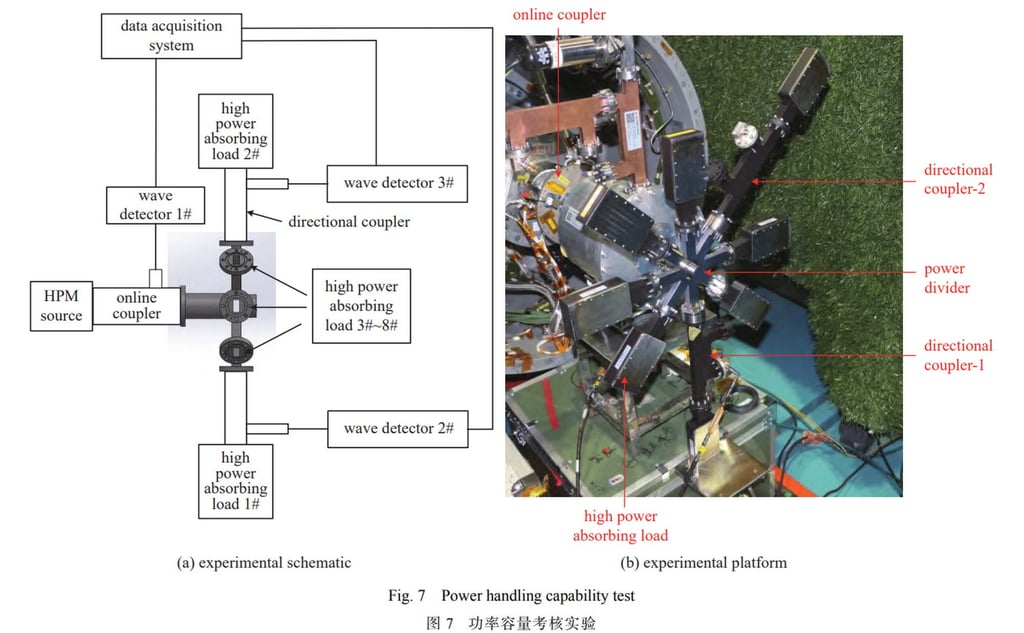Chinese researchers have claimed to develop a high-power microwave (HPM) weapon that is capable of producing electromagnetic pulses with an intensity similar to that of a nuclear explosion.
According to the reports, the system, described as compact yet highly powerful, is still undergoing laboratory testing and is not yet ready for field deployment.
Chinese researchers assert that the system can inflict damage or entirely disable the electronic components within enemy weapon systems.
The new Chinese weapon employs advanced phased-array transmission technology to precisely focus energy, which extends its range. This design increases its destructive power and allows it to attack multiple targets simultaneously.
However, its development was far from easy, and in fact, the creation of such a weapon was once considered impossible due to the risk of self-destruction from the pulses it generates.

The electromagnetic waves of the Chinese weapon can exceed one gigawatt of power, with rotating waves requiring precise conversion into a stable form and distribution across eight channels for phased-array antennas.
In a power divider the size of a pedestal fan, the electric field strength surpasses 80,000 volts per meter, similar to the electromagnetic pulses from nuclear explosions.
The report stressed that such high-intensity radiation is extremely difficult to manage, with no prior public reports of phased-array transmission at gigawatt power levels.
However, this technical hurdle was successfully overcome by a joint research team from the National University of Defence Technology and the Northwest Institute of Nuclear Technology.
Chinese scientists claim that the high-performance power divider developed by their team withstood over 5,000 full-power pulse emissions without any signs of “tail erosion” or breakdown and maintained a stable waveform throughout the experiments.
Furthermore, its operating efficiency reached 96.6%, and its power capacity threshold is likely to exceed 1GW, meeting the military’s demands for high-power capacity and transmission efficiency in HPM phased-array antennas.
Race For Directed Energy Weapons
The rapid proliferation of drones and other aerial threats has spurred a military race to develop and deploy countermeasures, particularly those with a lower cost-per-shot kill.
Directed energy systems, including high-energy lasers and high-power microwaves (HPM), have emerged as promising solutions, with militaries worldwide now seeing years of research and development come to fruition.
One of the key advantages of directed energy weapons over traditional kinetic weapons is their virtually limitless “magazine depth.” Unlike kinetic weapons, which rely on finite ammunition that must be manually reloaded, HPM systems can theoretically fire indefinitely.
Furthermore, HPM weapons can operate non-lethally, potentially disabling manned vehicles without harming their occupants, a capability that could redefine rules of engagement.
Unlike lasers, which can only fire a concentrated beam for short durations, HPM weapons can emit wide-area, cone-shaped beams that allow them to target and neutralize multiple threats simultaneously.

This technology could allow naval ships to neutralize small, manned craft while sparing human lives. These systems utilize traditional dish-shaped antennas that require constant rotation to engage different targets.
Both China and the United States are advancing HPM technologies, with the US military planning to deploy such systems in the Indo-Pacific region to counter Beijing. Last year, the US deployed a warship, the Arleigh Burke-class guided-missile destroyer USS Preble, equipped with the advanced Helios laser weapon to Japan’s Yokosuka naval base.
Meanwhile, China is developing similar weapons with an eye on countering SpaceX’s Starlink network, which has proven crucial in the ongoing Russia-Ukraine conflict, aiding Ukraine’s ability to conduct strikes on Russian positions.
The tests of China’s latest HPM weapon have shown its ability to emit Ku-band electromagnetic pulses, a frequency used by communication satellites like Starlink.
Starlink satellites, which feature large antennas to capture weak ground signals and rely on commercial-grade components to reduce costs, may be vulnerable to attack.
Some Chinese space experts suggest that these components may lack the military-grade reinforcement needed to withstand high-energy strikes. As a result, Beijing is accelerating the development of anti-satellite weapons tailored to disrupt systems like Starlink.
According to Chinese scientists, gigawatt-level energy weapons could not only target drones but also satellites in low-Earth orbit.
Moreover, a recent computer simulation by Chinese scientists demonstrated that 99 Chinese satellites could successfully approach 1,400 Starlink satellites in about 12 hours.
These satellites, equipped with lasers, microwaves, and other tools, could conduct tracking, reconnaissance, and other operations, challenging Starlink’s perceived invulnerability.
- Contact the author at ashishmichel(at)gmail.com
- Follow EurAsian Times on Google News




